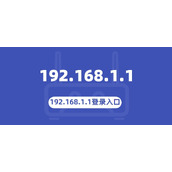YII2 MIGRATION的概念和使用详解
首先,我们为什么需要migrations呢?
很久以来,PHP一直没有一种机制把项目最新的DB结构同时同步到不同的机器上.
很多时候我们是卸掉原来的DB结构再把最新的DB结构导进来.
如果某人修改了数据库结构,那么我们不得不把修改的SQL文件在所有不同的机器上跑一遍.而且这个修改者可能要一个一个得通知到所有人(实际情况可能要好点).
现在YII提供了一个管理我们DB结构的方法.我们不需要浪费时间和精力来维护我们的DB结构了.
以下是在开发过程中使用migrations的步骤:
安装好yii2后,Windows下运行cmd命令行,到yii2所在目录,输入以下命令,可以执行migration命令初始化数据表的程序,自动创建表:
| 代码如下 | 复制代码 |
|
D:xampphtdocsyii2>yii migrate |
|
这个名为m130524_201442_init的migration定义在console/migrations/m130524_201442_init.php:
| 代码如下 | 复制代码 |
|
class m130524_201442_init extends Migration { public function up() { $tableOptions = null; if ($this->db->driverName === 'mysql') { // http://s*tac*ko*verflow.com/questions/766809/whats-the-difference-between-utf8-general-ci-and-utf8-unicode-ci $tableOptions = 'CHARACTER SET utf8 COLLATE utf8_unicode_ci ENGINE=InnoDB'; } $this->createTable('{{%user}}', [ 'id' => $this->primaryKey(), 'username' => $this->string()->notNull()->unique(), 'auth_key' => $this->string(32)->notNull(), 'password_hash' => $this->string()->notNull(), 'password_reset_token' => $this->string()->unique(), 'email' => $this->string()->notNull()->unique(), 'status' => $this->smallInteger()->notNull()->defaultValue(10), 'created_at' => $this->integer()->notNull(), 'updated_at' => $this->integer()->notNull(), ], $tableOptions); } public function down() { $this->dropTable('{{%user}}'); } } |
|
通过这种方式创建migration,以后可以很方便的部署数据库
相关文章
精彩推荐
-
 下载
下载疯狂医院达什医生中文版(Crazy Hospital)
模拟经营 疯狂医院达什医生中文版(Crazy Hospital)疯狂医院达什医生最新版是一款医院模拟经营类游戏,逼真的场景画
-
 下载
下载宝宝庄园官方版
模拟经营 宝宝庄园官方版宝宝庄园官方版是一款超级经典好玩的模拟经营类型的手游,这个游
-
 下载
下载桃源记官方正版
模拟经营 桃源记官方正版桃源记是一款休闲娱乐类的水墨手绘风格打造的模拟经营手游。玩家
-
 下载
下载长途巴士模拟器手机版
模拟经营 长途巴士模拟器手机版长途巴士模拟器汉化版是一款十分比真好玩的大巴车模拟驾驶运营类
-
 下载
下载房东模拟器最新版2024
模拟经营 房东模拟器最新版2024房东模拟器中文版是一个超级有趣的模拟经营类型的手游,这个游戏















